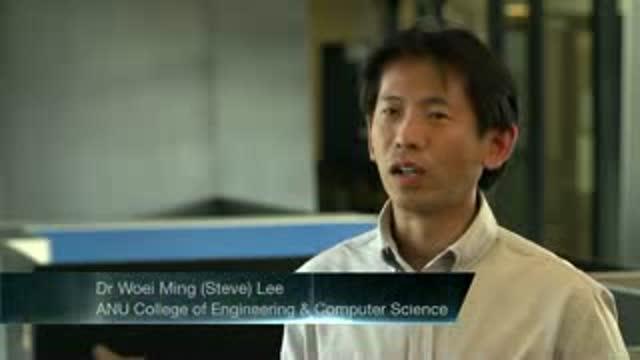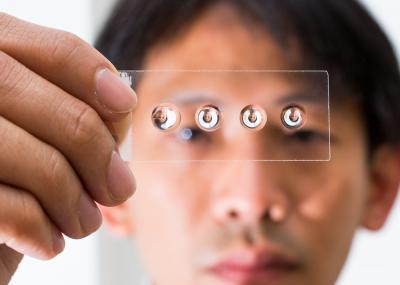"So then I decided to try to find the optimum shape, to see how far I could go. When I saw the first images of yeast cells I was like, 'Wow!'"
Dr Lee and his team worked with Dr Phan to design a lightweight 3D-printable frame to hold the lens, along with a couple of miniature LED lights for illumination, and a coin battery.
The technology taps into the current citizen science revolution, which is rapidly transforming owners of smart phones into potential scientists. There are also exciting possibilities for remote medical diagnosis.
Dr Phan said the tiny microscope has a wide range of potential uses, particularly if coupled with the right smartphone apps.
"This is a whole new era of miniaturisation and portability - image analysis software could instantly transform most smartphones into sophisticated mobile laboratories," Dr Phan said.
"I am most able to see the potential for this device in the practice of medicine, although I am sure specialists in other fields will immediately see its value for them."
Dr Lee said the low-cost lens had already attracted interest from a German group interested in using disposable lenses for tele-dermatology.
"There are also possibilities for farmers," he said. "They can photograph fungus or insects on their crops, upload the pictures to the internet where a specialist can identify if they are a problem or not."
The lens making technology is described in the latest issue of Biomedical Optics Express, published by The Optical Society.

An Australian National University scientist has discovered a simple, cheap way of turning a smart phone into a high-resolution microscope, opening the door to a revolution in science and medicine in developing countries.
(Photo Credit: Australian National University)

Dr. Steve Lee inspects PDMS droplet lenses on a slide.
(Photo Credit: Australian National University)
Source: Australian National University